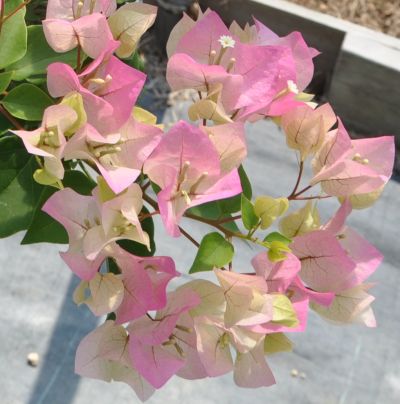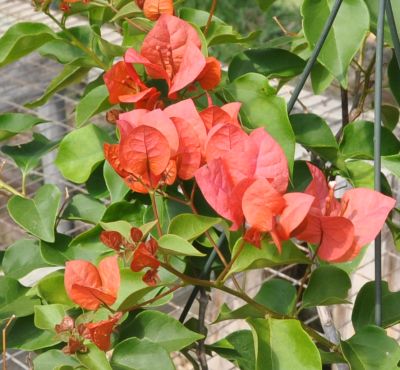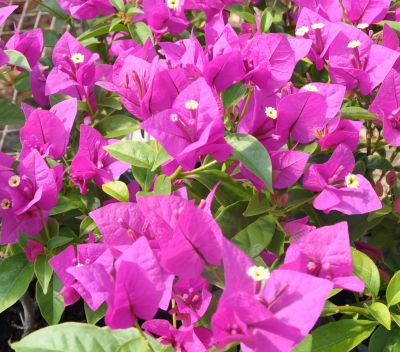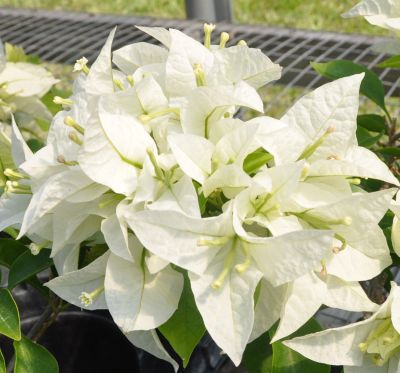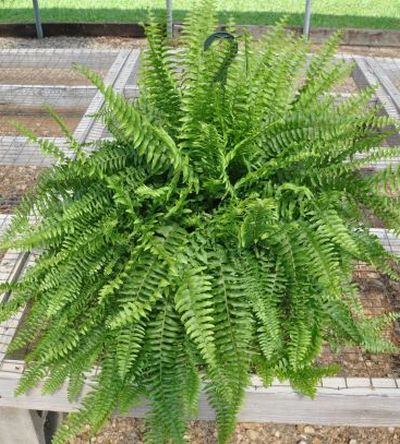|
Greenthumb Newsletter |
June 30, 2011 / July2011 |
|||||||
|
In this
issue: |
What looks
good now? *Bougainvillea – We have quite a few 2gallon plants that are blooming quite well now. *Red, Purple, & Pink Trailing Vinca – These plants will continue to bloom till frost. *Tibochina (Princess Flower) – In 1 gallon pots, they are just starting to bloom again. |
|||||||
|
Bougainvillea Growing Guide
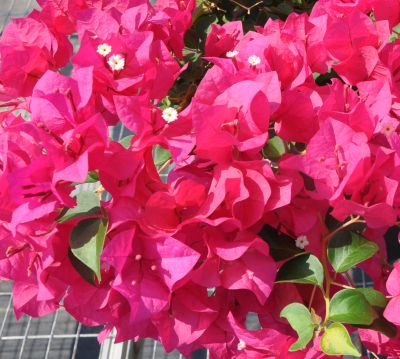
The
most frequently asked question people ask about Bougainvillea is: "What
can I do to get my plant to bloom like it was when I bought it?"
You may be
astounded that a
plant can provide so much concentrated color if you follow these simple
steps. Happy growing! |
What to do with Roses in the Summer
First of all go out and
inspect the
plants closely. Do it later in the evening when it's not so hot and you
will be sure to take time to get a good look. Check the leaves closely
for bugs. You may need a magnifying glass to see the little ones if
they're present.
If your plants are still poorly you will need a miticide (an insecticide specifically for mites). Before you go to the store, check your shelves. Malathion is somewhat effective - try that before you spend more money. If that doesn't work go to the store and read the labels before you make your purchase. You'll want to get the best broad spectrum product available.
Once
you get control
of the mites be sure to water your plants well during those hot dry
days. When the rose bed is dry soak the roots well - let the hose run
slowly (any time of the day) into your rose bed until it's well watered
while you sit and have a cold glass of tea (or a beer). Overhead
watering of roses is not recommended, especially late in the evening.
Also
don't forget
that roses are heavy feeders. Roses require more frequent fertilizing
than most other blooming plants - at least once every four to six weeks
with granular fertilizer. If you've been using a soluble liquid
fertilizer (Miracle Gro or equivalent) you should use it every other
time you water. Do the math and figure what's more cost efficient.
Whatever you use, don't let them go hungry. Nearly any good rose food
or all-purpose slow release fertilizer is sufficient.
No,
the individual
roses still won't be as large as they were in the spring, but they will
be much nicer than they were before you applied a little TLC. Note:
In Mid
September. If you trim your plants just a little harder than you have
been doing all late spring and summer and then fertilize well you will
be rewarded with a very good fall bloom – almost as nice as the
first bloom of the spring. |
|||||||
|
Free
Anti-Virus Software for the PC Gary
Marmillion, Sr.
225-294-3683 As
you may have noticed, we have
another small business at the nursery that has nothing to do with
plants. We work on PCs: specifically we specialize in virus/malware
removal and wireless networking. Since you're reading this on your
computer you may have a small interest in keeping your PC running
smoothly. So here's a suggestion to help in that regard. When
you bought your Windows PC,
along with it was an OEM (pre-installed) security program from Symantec
(Norton), Trend Micro or some other company. After a certain period of
time you will need to renew the paid subscription for this software for
it to continue protecting your PC from virus/malware attacks that are
so prevalent on the internet. If you don't pay the renewal fee the
software will quit working soon after the subscription runs out. Your
PC will then be wide open to attack from any virus on the internet if
you are so unlucky to surf a web page where one is embedded or download
any file in which one is present. Malware
can, in extreme cases,
render your PC unusable. However even mild attacks can be very
irritating, such as redirecting your browser (Internet Explorer,
Firefox, etc.) to download unwanted internet pages and even unwanted
software. So
what can you do besides paying
the renewal subscription for this vital antivirus software? You can
download and install a free antivirus program. Yes, free, you'll never
need to pay for it and it will protect your PC just as well as the ones
you have to pay for. What's
the catch? Quality is not
free, right? You're correct to a certain extent. The software vendors
that offer these free versions of their anti-virus software also sell
paid-for versions and make every offer they can think of to get you to
switch to them at every renewal period. However you are under no
obligation to pay as long as they continue to offer a free version.
These companies have been offering their software freely for years so
it's not likely they'll change now. Yes,
you will get a few more
features with a paid version. These features sound good and even
essential in some cases, but I have been running free antivirus
software for over ten years without any successful attacks on my PCs.
Your secure connections (https) will stay secure as longs as you are
running the latest browser version and Windows itself is kept updated.
(More on that in my next article.) If
you need to renew your
anti-virus software subscription and are tired of paying then go to
CNET's download.com and download a free software package. There are two
excellent ones available, Avast
and AVG.
Pick one and download it and install it. Both are very good and highly
recommended. They both offer automatic download of anti-virus updates.
Microsoft also offers a free antivirus program and it is a good one. If
you have confidence in them go to micosoft.com and download Microsoft
Security Essentials. Before
you install any new
antivirus software it is necessary for you to un-install your old
antivirus software. It is inadvisable to have more than one antivirus
program running on your PC. They may conflict with one another
rendering both useless. Go to the Control Panel and choose Programs, UnInstall a Program (Add or
Remove Programs on
Windows XP). Very carefully choose the name of your
antivirus
program from the list and choose Uninstall. (If you have a Norton
product installed see note below.) So,
out with the old and in with
the new. And don't forget to register it after installation; they'll
need only your name and email address. Be sure to choose the free
option. Oh,
and watch closely during
installation of your new software, the installer may offer to install a
new browser program and/or internet search toolbar. Uncheck the boxes
to avoid installing them; they will add no new functionality to your PC. Remember,
the time to check your
antivirus software is before your subscription runs
out and before
you have problems. It's much more difficult and expensive afterwards. CNET's Download.com Note
on uninstalling Norton
products: Norton Antivirus and some other Norton security products are
unique (in my experience) in that they almost always require the user
to download an
un-installer program from
their website to remove their programs from the user's PC. Most
software vendors include an
un-installer
along with the original installer program. If
you have a pre-installed Norton
security product you wish to remove, first make a note of the product
name and year of purchase (of the PC), then go to the Norton web site,
specifically to the Norton Removal Tool Page.
Select and download the appropriate un-installer for your particular
product to your desktop and then double-click on it after the download
completes to remove the Norton product from your PC. You must restart
your PC to complete removal before installing your new software. If
your PC is acting glitchy
or you have any
questions about this article feel free to email me (just reply to this
newsletter) or call me at 225-294-3683 after 2PM every day. |
Plants on
sale!
In Louisiana – Find an LSU Ag Extension County Agent Near You Additional
Information
Didn't like it? If you got this newsletter by mistake and don't want it or if you asked for it and are disappointed - we hope not - you may simply reply to this newsletter email with one word - UNSUBSCRIBE. That's it. We will take you off of our list immediately. Liked it? However, if you liked it and wish to compliment, criticize or suggest, please feel free to do so. It's just as easy as unsubscribing. Just reply to this email with your helpful comments. Have a question? If so and you would rather type it out and send it as an email to us feel free to do so. We will either respond with an email or a phone call to you with the answer, your choice. Have a request? Want us to get a particular plant variety for you for the fall, winter, or spring? If you let us know ahead of time and it's available we'll be certain to get just what you want. Thank You,
|
|||||||

